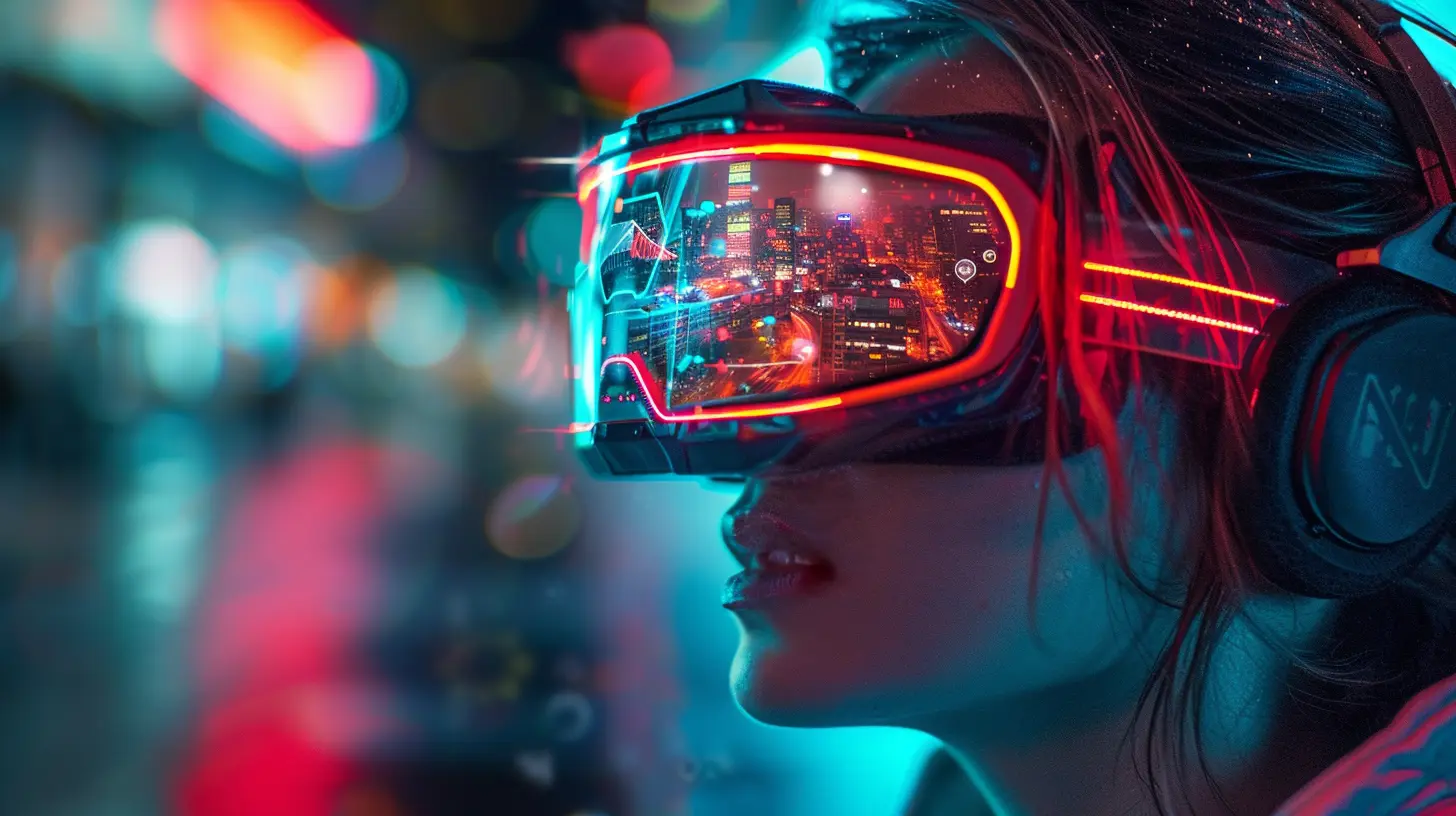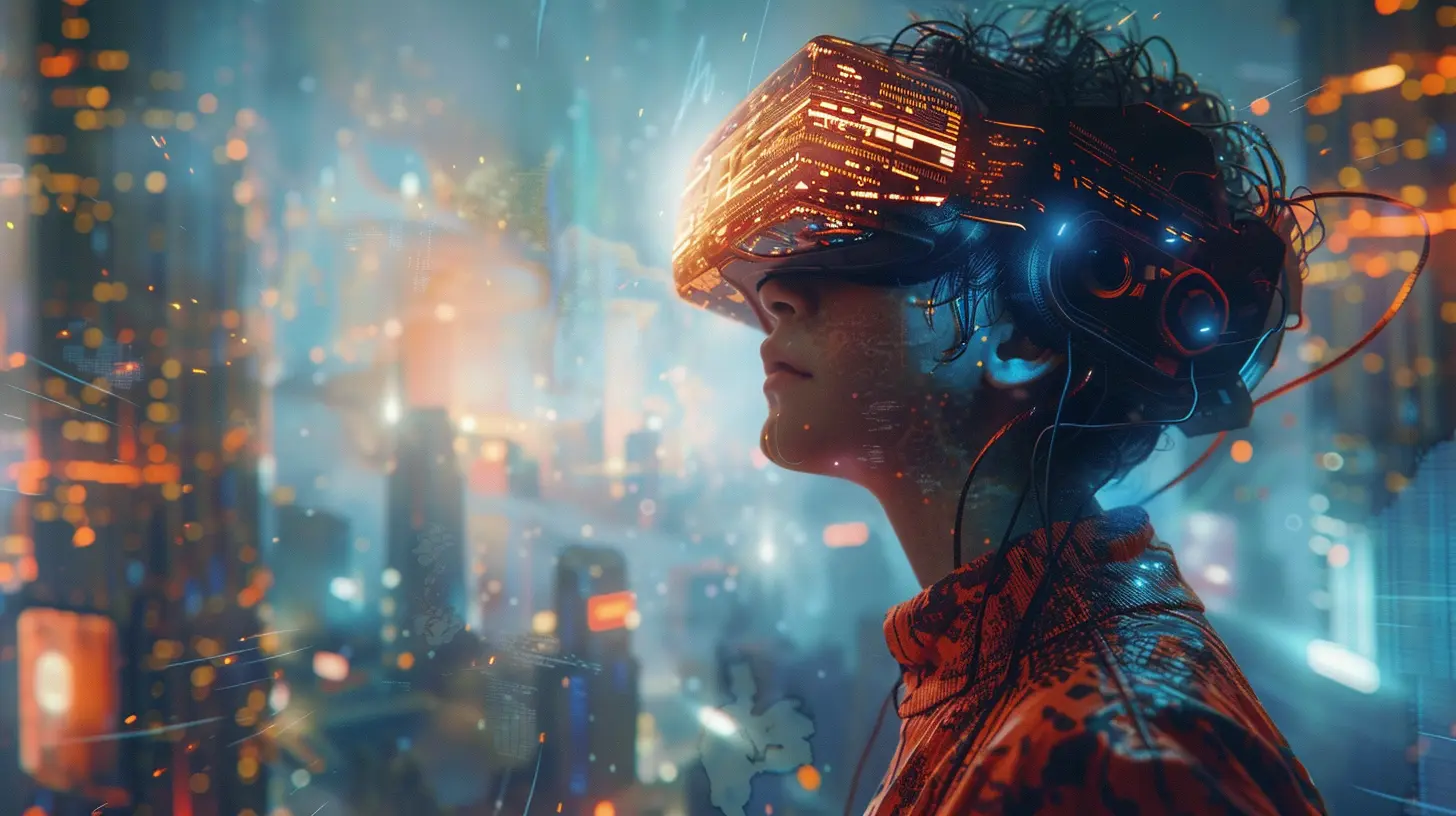Exploring the Connection Between AR Games and the Metaverse
2 August 2025
Have you ever caught yourself wandering around your neighborhood, phone in hand, chasing virtual creatures or hunting down digital treasures? If you’ve played a game like Pokémon GO, then you’ve already dipped your toes into the fascinating world of AR (Augmented Reality) gaming. But here’s the kicker — what if I told you that moment was also your sneak peek into something way bigger? Yep, I’m talking about the Metaverse.
So, what’s the connection between AR games and the Metaverse? Why do these two buzzwords keep popping up in the same sentence? Buckle up — we’re going on a deep dive into the wild, weird, and wonderful fusion of digital and physical realities.
What Exactly Is the Metaverse?
Let’s keep it real — the Metaverse sounds like something straight out of a sci-fi movie, right? But it’s not as far-fetched as it seems. In simple terms, the Metaverse is an expansive, immersive digital universe where users can interact with digital environments, assets, and even each other in real-time.Imagine it as the internet brought to life — not just something you browse, but something you live in. Think online virtual worlds, NFTs, cryptocurrency transactions, virtual shopping, concerts, meetings, and yes, gaming — all happening in real-time, in a shared digital space.
Now, here’s where things get juicy: AR games are acting as one of the most accessible entry points into this alternate universe.
AR Games: Your First Step into the Metaverse
Okay, so what’s the big deal with AR (Augmented Reality) games?AR games blend elements of digital gameplay with your real-world environment using smartphones, tablets, or wearable devices like smart glasses. Think of it like this: AR is the lens you use to peek into the Metaverse from the real world.
Games like Pokémon GO, Ingress, and Harry Potter: Wizards Unite have already shown us what it's like to fuse physical and digital worlds. Instead of fully diving into a VR headset and disappearing from reality, AR keeps you grounded while overlaying digital content onto your surroundings.
And guess what? That ability to merge the digital world with the real one is exactly what the Metaverse needs to feel... well, real.
How AR Games Lay the Foundation for the Metaverse
Let’s not overcomplicate this. AR games are more than just fun diversions — they’re the blueprint for how we might interact within the Metaverse in the future. Here’s how:1. Creating Persistent Digital Worlds
In AR games, digital elements exist in your world persistently — meaning they’re there whether you see them or not. Just like in the Metaverse, these virtual elements can interact with the real world and be shared by multiple users.So when you and your friend both see the same Pikachu in the same park, that's a small taste of what shared reality looks like in the Metaverse.
2. Geolocation and Spatial Mapping
One of AR’s superpowers is its use of maps, GPS, and spatial data. These tools help create context-aware interactions — like placing objects in specific real-world locations.In the Metaverse, this tech helps build a digital twin of our world — a mirror of our cities, landmarks, and spaces that we can navigate digitally. Cool, right?
3. Digital Economies Are Already Here
AR games often come with in-game currencies, skins, upgrades, and even marketplaces. Sound familiar?The Metaverse also leans heavily on digital economies — think NFTs, crypto, and virtual commerce. AR laid much of the groundwork for how digital economies function in immersive settings.
4. Fostering Communities
Let’s be honest — beating gyms in Pokémon GO or teaming up for raids isn’t just about the gameplay. It’s about connecting with others. AR games naturally foster community experiences in real-world settings, which mirrors how social interactions will function in the Metaverse.
The Tech That Makes It All Possible
Let’s geek out for a second. AR games and the Metaverse both rely on some pretty high-tech stuff to function. Here’s a quick breakdown:- AI (Artificial Intelligence): Enhances interactivity and responsiveness.
- 5G Connectivity: Enables lightning-fast data transfer, which is crucial for real-time shared experiences.
- Cloud Computing: Stores vast amounts of data and processes interactions in real-time.
- Wearables: AR glasses and headsets that make the experience hands-free (think of Meta's AR glasses or Magic Leap).
- Blockchain: Ensures ownership and authenticity of digital assets, like NFTs or virtual land.
Without these innovations, AR gaming and the Metaverse would just be fancy ideas on paper.
Real-World Examples of AR and the Metaverse Colliding
Alright, let’s move from theory to real-life action. Here are a few examples where AR and the Metaverse are already overlapping in pretty awesome ways:🔹 Pokémon GO and Niantic’s Vision
Niantic, the creator of Pokémon GO, has been very vocal about building a “real-world Metaverse.” They’re working on a platform called Lightship, which allows developers to create AR experiences grounded in the real world. Their goal? Build a spatial internet where augmented reality enhances our day-to-day lives.🔹 Snap and AR Commerce
Snapchat is much more than face filters. With its AR lenses and shopping experiences, Snapchat is leading the charge toward a metaverse where commerce, fun, and socialization blend seamlessly.🔹 Meta and AR Glasses
Meta (formerly Facebook) is going all-in on the Metaverse, and while their VR efforts get much of the spotlight, their AR projects like Ray-Ban Stories and Project Aria are clear signs they see a future where AR plays a big role.Challenges on the Road Ahead
Okay, so it’s not all sunshine and digital rainbows. Integrating AR games into the Metaverse isn’t without its headaches. Let’s talk about the big ones:🔸 Privacy and Data Concerns
AR collects tons of data — location, spatial maps, movement, etc. The more immersive the experience, the more data companies gather. In a fully connected Metaverse, who owns that data? And what are they doing with it?🔸 Tech Limitations
Wearables still have room to grow. AR glasses aren’t exactly sleek fashion statements yet, battery life is an issue, and device affordability can hinder mass adoption.🔸 Fragmentation
Right now, there are a lot of isolated AR experiences. For the Metaverse to be truly “meta,” we need interoperability — where apps, games, currencies, and avatars can move freely across platforms.Why the Future of Gaming Is Tied to AR and the Metaverse
Let’s face it — gaming has always been at the forefront of innovation. Multiplayer modes, online chat, esports, streaming — gamers were the early adopters of so many digital trends.So it’s no surprise that AR games are laying the groundwork for the Metaverse. The immersive, interactive elements we see in AR are exactly what the Metaverse promises: a space where we play, socialize, work, and create in a blend of real and virtual worlds.
In the near future, you might log into an AR game, win a rare skin, and use that skin not just in your game, but in a virtual concert, a fashion show, or even a job interview in the Metaverse. Wild, right?
What’s Next? A Look into the Future
AR games will likely evolve far beyond what we know today. With the rise of mixed reality (MR) — which combines elements of both VR and AR — we’ll see even more immersive experiences. Think of it as stepping through a digital doorway into another version of reality, without leaving your living room.We could see:
- Cross-platform avatars that travel across AR and VR spaces.
- Games that adapt to your real-world environment in smarter ways.
- Advanced hand and eye tracking for seamless control.
- Hyper-localized experiences — imagine a game that changes based on the mood of your city or even the weather!
The bridge between AR gaming and the Metaverse will only get stronger, and honestly, we’re already halfway across.
Final Thoughts
Here’s the bottom line — AR games are more than just a cool way to kill time. They’re the stepping stones to building and understanding the Metaverse. They give us a glimpse of what’s possible when the physical and digital worlds collide.Whether you’re catching Pokémon or battling alien invaders on your block, you’ve already experienced a tiny piece of a much larger puzzle. The Metaverse might still be unfolding, but AR games are helping shape it, one immersive experience at a time.
And who knows? The next time you open an AR game on your phone, you might just be taking your first step into a whole new universe.
all images in this post were generated using AI tools
Category:
Augmented Reality GamesAuthor:

Jack McKinstry
Discussion
rate this article
1 comments
Zayden Collins
In the dance of pixels and dreams, AR games weave our reality with the metaverse's fabric, crafting realms where imagination knows no bounds.
August 13, 2025 at 3:07 AM

Jack McKinstry
Thank you for your poetic insight! It beautifully captures the essence of how AR games enrich our experiences within the metaverse.


